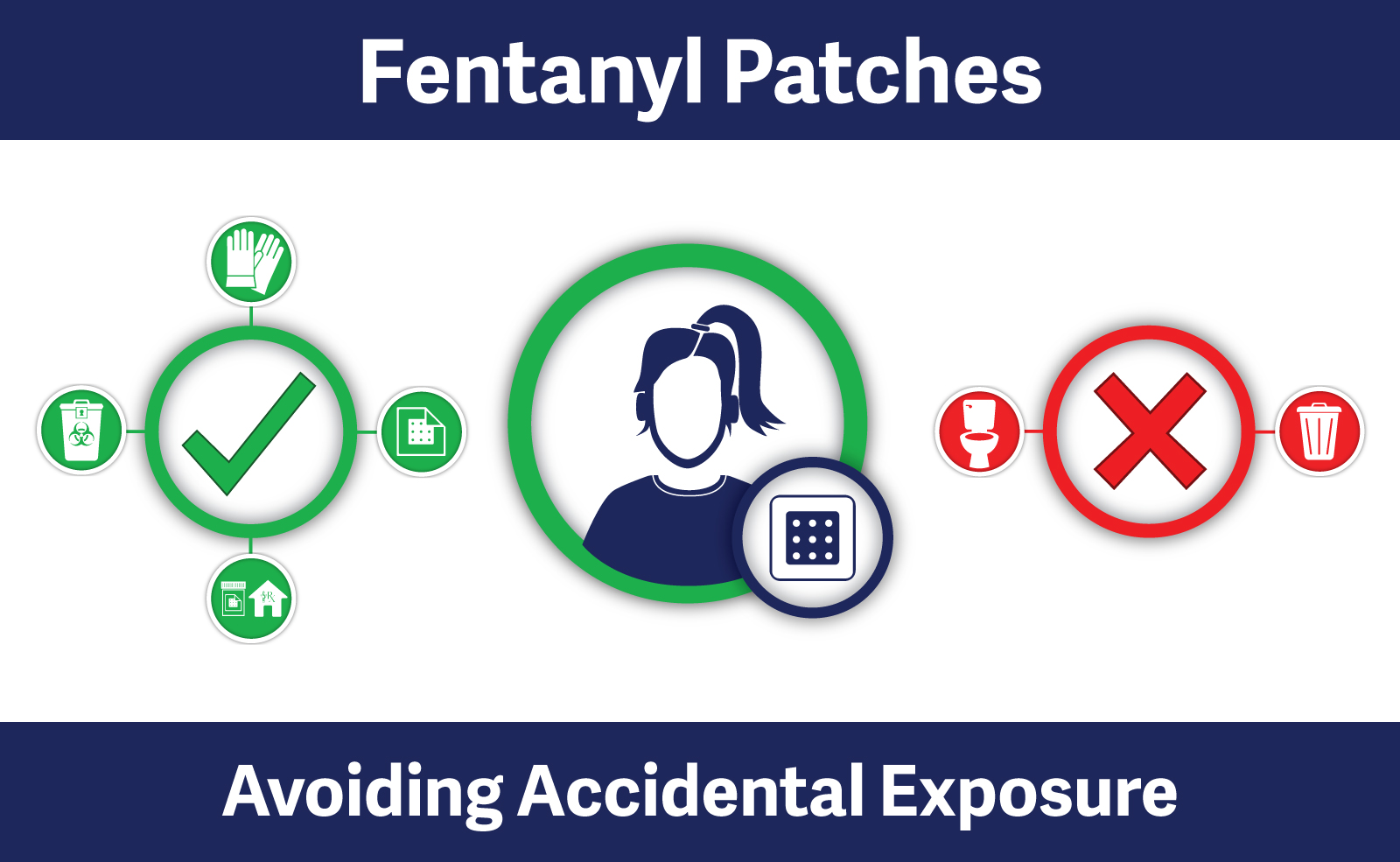Avoiding Accidental Exposure from Fentanyl Patches
BC’s Opioid Crisis saw unprecedented escalation in 2016. The significant increase in drug-related overdoses and deaths prompted Provincial Health Officer Dr. Perry Kendall to declare a public health emergency on April 14, 2016.
There were a 935 overdose deaths in 2016 and rates appear to be getting worse in 2017. A BC Coroners report estimates that 339 people died of accidental overdose in the first three months of 2017. 120 of these deaths occurred in March, making it the third-highest death toll for a single month on record in the province.

(BC Coroners - Illicit Drug Overdose Deaths in BC, January 1, 2007 – March 31, 2017)
Approximately 61% have been linked to fentanyl, an opioid-based pain killer that is about 100 times more potent than morphine.
Because of its high potency, Fentanyl is very easy to overdose on through both intentional abuse and unintentional contact. Most Fentanyl related deaths are caused by ingestible forms of Fentanyl being cut into illicit substances. However, accidental exposure to alternate forms of fentanyl can still present risks for diversion and overdose.
Fentanyl Patches
A Fentanyl patch is a medication adhesive transdermal patch that is placed on the skin to deliver a specific dose of fentanyl through the skin. Improper disposal of these patches is a risk for diversion, illicit use and overdose. Accidental exposure to the patches can also cause serious harm to members of the public including children, pets, sanitation workers, as well as our water supply.
Unsafe Disposal
Improperly disposed fentanyl patches present a risk for diversion, illicit use and overdose. A fentanyl patch may still contain more than 50% of the labelled amount of fentanyl after 3 days of use – enough to cause serious harm or even death.
In addition to illicit diversion, disposing of Fentanyl patches by placing them in the garbage or flushing them down the toilet can cause serious hard to children, pets, sanitation workers, and our water supply.
Accidental Exposure Can Cause Serious Harm
Fentanyl patches have an adhesive back that makes it easy for the patch to accidentally stick to arms or hands. The clear patches can easily stick to children, pets or others who might come in contact with patches, such as in household garbage cans. Just a small amount of exposure to the residual drug can cause serious harm and even death.
Helping Patients Safely Dispose of Fentanyl Patches
Many patients are unable to have their fentanyl patches removed by a healthcare professional. To help reduce the risk of an accidental overdose from used fentanyl patches, the College recommends patients be counseled on the safe disposal of fentanyl patches.
The College has developed the Safe Disposal of Fentanyl Patches patient handout which pharmacists can share with their patients to help ensure they know how to safely dispose of their fentanyl patches.
How to Safely Dispose of Fentanyl Patches
To safely dispose of a fentanyl patch:
 |
Wear protective gloves to prevent accidental exposure to the drug |
 |
Fold the patch in half so that the adhesive side is stuck together |
 |
Dispose of patch in a tamperproof, childproof storage container (or sharps container) |
 |
Bring the container holding the patch to your pharmacy or other medications return location for safe disposal |
Do NOT dispose of fentanyl patches by:
 |
Placing them in the garbage |
 |
Flushing them down the toilet |
What to do if accidental exposure to fresh or used patches occurs:
- Remove patch immediately and wash the affected area with lots of water. Do not use soap, alcohol, or other solvents as these may increase the drug’s ability to go through the skin.
- Seek medical attention right away.
Pharmacy Disposal of Fentanyl Patches
Standard 6 of the College’s Code of Ethics requires registrants to provide safe disposal of drugs and health related products and support environmentally friendly practices.
All pharmacies are required under the Pharmacy Operations and Drug Scheduling Act – Bylaws, Section 3(2)(h)(iii) to have procedures in place for the proper disposal of unusable drugs and devices.
The College asks all community pharmacies to accept returned fentanyl patches from any patient to help ensure these patches are disposed of safely. Only full pharmacists working at a community or hospital pharmacy can be responsible for the safekeeping and destruction of fentanyl patches and other narcotics.
When a fentanyl patch is returned to a pharmacy, a pharmacist should:
- Avoid directly touching the patch (use medical gloves to prevent accidental exposure)
- Document and destroy according to usual narcotic destruction and disposal procedures (Pharmacies no longer need to request and receive pre-authorization from Health Canada for local destruction of unserviceable narcotics and controlled drugs)
- If immediate destruction is not possible, the patches should be securely stored in the pharmacy to prevent against loss, theft, or diversion
For more information on the safe disposal of Fentanyl patches, visit our Resource Page at:
Bcpharmacists.org/fentanyl-patches
Links
- Safe Disposal of Fentanyl Patches (College of Pharmacists of BC)
- How to use Naloxone to Reverse the Effects of an Opioid Overdose (College of Pharmacists of BC)
- Returning Unused and Expired Medications in BC (Health Products Stewardship Association)
- A Guideline for the Clinical Management of Opioid Use Disorder (BC Center on Substance Use)
- Reminding Canadians to safely use and dispose of fentanyl patches to prevent accidental exposure (Health Canada)
- Safe Prescribing of Drugs with Potential for Misuse/Diversion (College of Physicians and Surgeons of BC)
- Fentanyl, Opioid overdose crisis, Narcotics

 Share
Share



